go Anywhere Stripe tutorial
It's my month to lead the quilt for the Love circle of do. Good Stitches (a charity quilting bee). I'm a leetle late, but pretty excited about what I've cooked up. This time I'm thinking large-scale, solids and stripes going every which way. Our blocks will finish 15" x 24", but you could use the techniques in this tutorial to make blocks of any size - square, triangle, whatever.
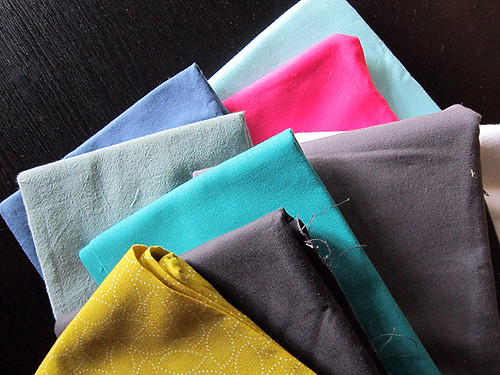
Step 1: Prepare Paper
Start with paper cut in the finished block size you'd prefer. For the bee, I'm asking for large blocks finishing at 15" x 24". I used a roll of inexpensive kids painting paper. If you don't have large paper, tape together several sheets with scotch tape, then cut to the desired size. To create a 15" x 24" paper, use 6 sheets of regular 8.5" x 11" paper or 4 sheets of 8.5" x 14" legal paper.
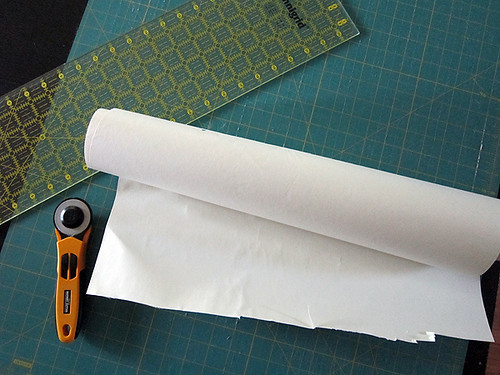
Cut paper to size accurately with your rotary cutter, quilting ruler and cutting mat. Cutting paper will dull the blade, so I designate an old blade just for this purpose.
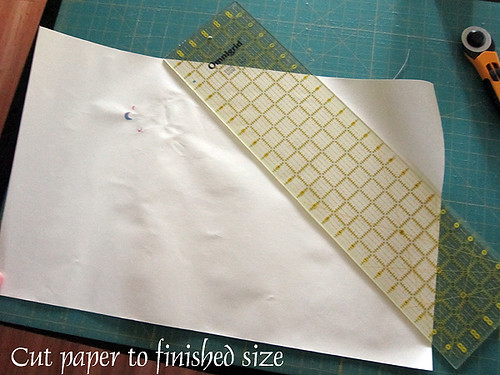
I intend to use 15 blocks total in a 3-5 layout to create a 72" x 75" throw quilt.
Step 2: Design Block
Draw 1-3 straight lines on your paper. These will become seam lines for the block components. Try to break up your block in an interesting way, but make sure you can see how to sew the components together without resorting to y-seams or whatnot (unless that's your thing). For the bee, I'd mostly like blocks with 2 drawn lines as shown in this quilt sketch.

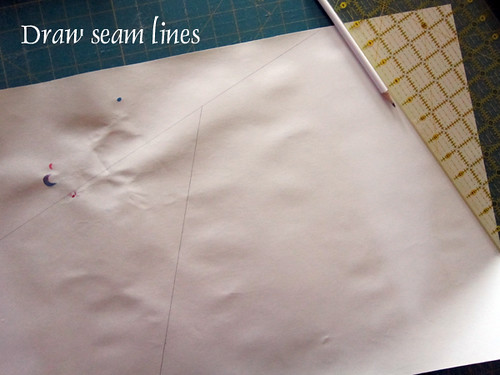
Cut paper on drawn lines, separating the paper into 2-4 block components. Label right side of each paper piece before you get mixed up!
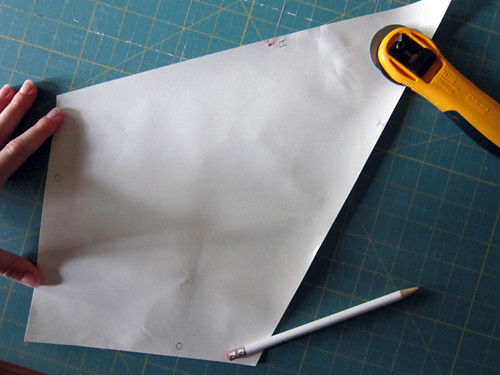
Draw lines on the right side in the desired direction of your stripes. Make each component's stripes go in a different direction to create dynamic movement.
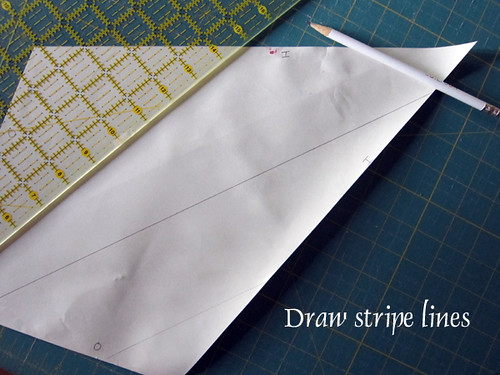
We'll be paper foundation piecing block components with parallel stripes. These marked lines will serve as a double-check system to help you see that you are sewing stripes straight across the piece. Make sure one line is near the edge, to guide the placement of your first fabric strip. Don't worry too much about the placement of the other lines. Just draw a few lines scattered across, making sure they are all parallel to one another.
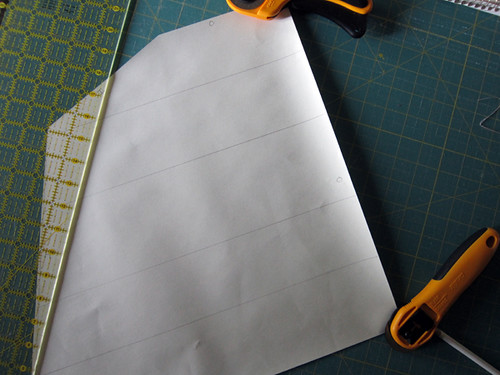
Step 3: Sew Stripes
With a sharp rotary blade, cut fabric strips in 1 - 2.5" widths. Be sure to cut a variety of widths such as 1.25", 1.5", 2", etc. For my bee-mates, I'm asking that each block component feature 2 alternating solids, kind of like a rugby stripe. We'll mix up our stripe widths randomly.
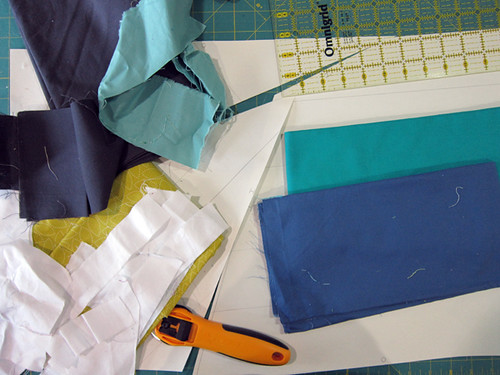
Load your sewing machine with a dull needle (I reserve one for paper sewing). Set the stitch length shorter than normal, such as 1.5. You will be sewing through the paper and the fabric at the same time. The short stitch length perforates the paper, making the paper easy to remove after the block is complete.
Choose 2 fabric strips to start. Place them right sides together near the edge of a paper block component, using a marked line on the paper to guide desired orientation of your stripe. Make sure that when the strips open they extend beyond the nearby paper edges by more than 1/4". Why? After sewing all stripes, we will trim around the paper foundation so as to create a 1/4" seam allowance on all sides by cutting at 1/4" past the paper edge on all sides.
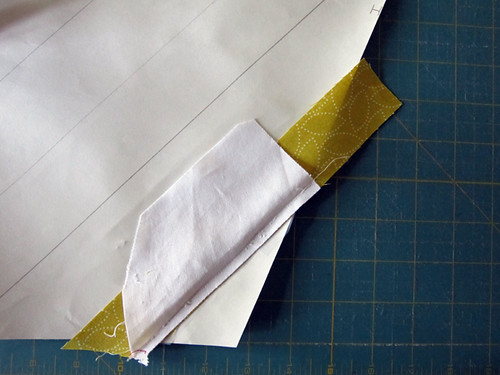
Sew those first 2 pieces at 1/4" from their matching raw edge. Then, press open strips from the right side of the block. Seams will be pressed to the side.
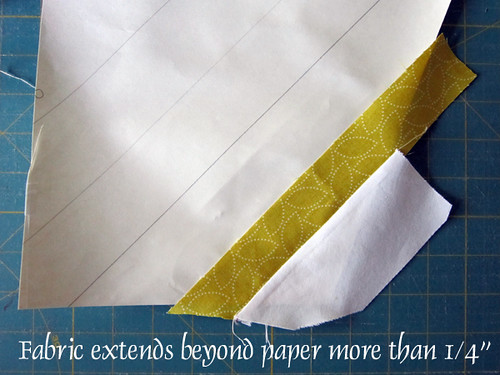
Add another fabric strip. Again, make sure that when the fabric strip is opened it will extend beyond the paper edge by more than 1/4" at top and bottom. Sew with a 1/4" seam through both fabrics and the paper as before. Press as before.
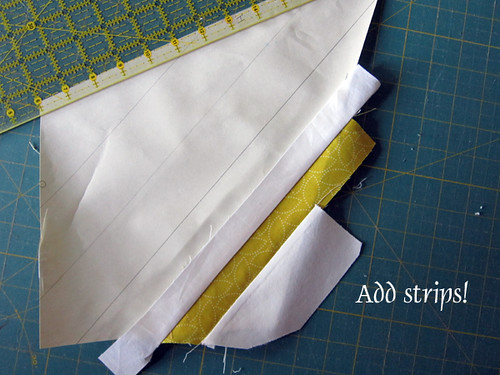

Continue adding fabric strips, working across the entire block component. When you come close to marked lines on your paper foundation, check that your stripes are still "straight". Make minor adjustments when adding the next strip, as needed.
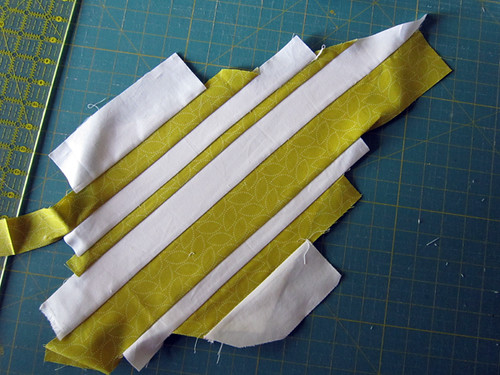
After filling the block component with stripes, turn it wrong side up on your cutting mat. Cut around at 1/4" beyond the paper edge on all sides, creating a 1/4" seam allowance. Leave paper in place at this time.
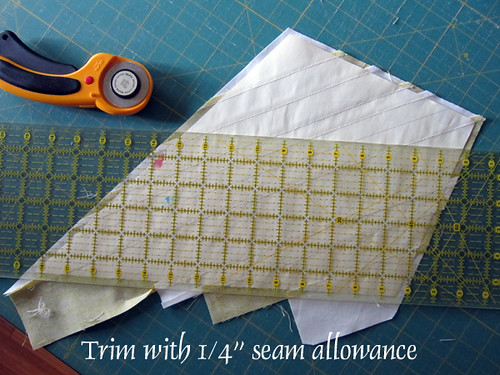
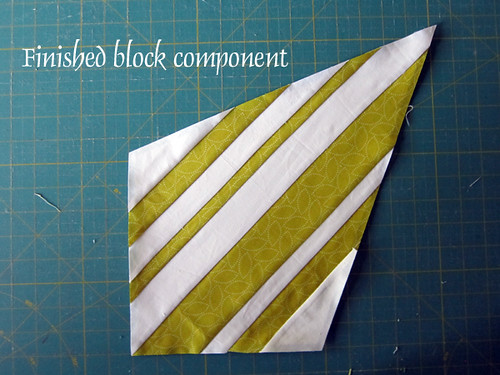
Tip: Sometimes the paper will tear slightly with handling. When that happens, use scotch tape to repair paper. It's important to maintain correct paper size so that all block components will fit together.
Step 4: Assemble Block
Set all block components out in place.
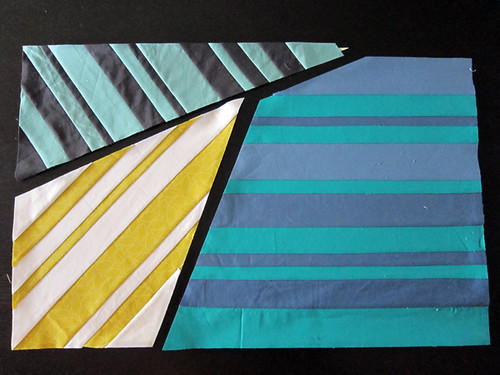
Locate the first two pieces that must be joined. Flip them right sides together along seam line.
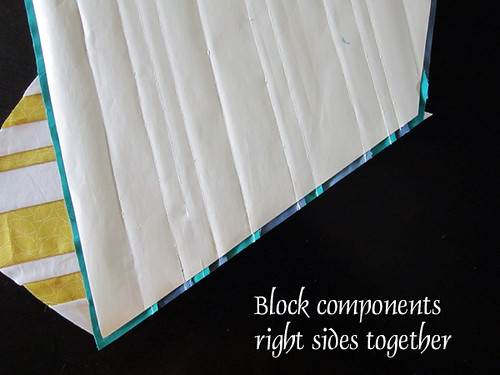
Since we are dealing with triangles you must carefully shift fabrics along seam line until they are matched in a particular way. The goal is that raw edges match exactly where the 1/4" stitch line will start and end on the piece.
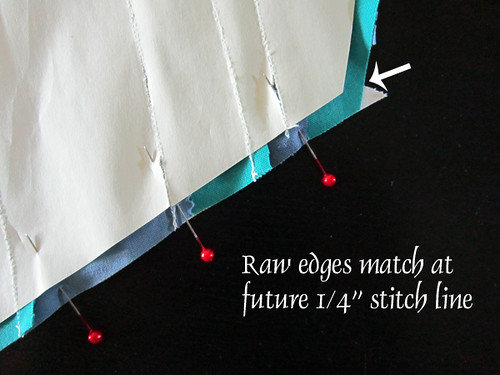
Sometimes this takes some trial and error to understand. Be sure to set your machine back to a regular stitch length so that if you have to unpick a seam it's not so burdensome! Here is another example:
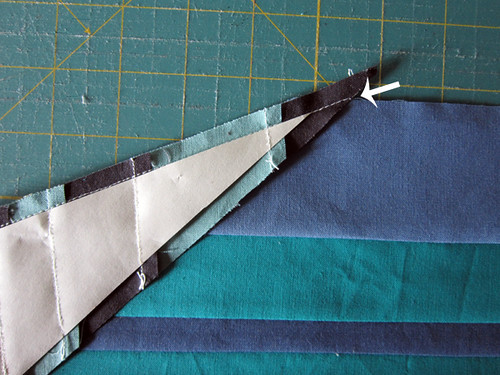
When properly matched, triangular pieces will join together to create a nice straight raw edge.

One of my pieces had turned out larger than it should have because of minute spread where the paper had separated. Seeing that the seam would not line up perfectly at start and end of my stitch line, I prioritized correct matching at this "inside seam". This made a nice straight raw edge for joining with my last block component. The lower/outside edge is not straight, but it will be trimmed off when the block is finished.
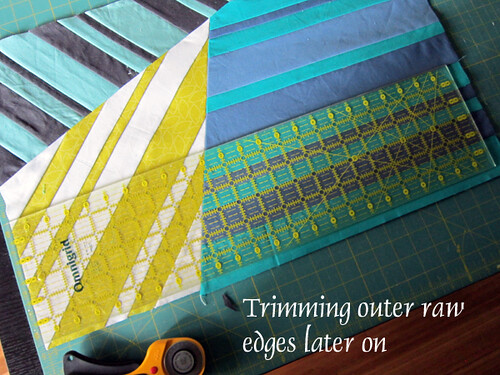
When sewing block components together, sew a scant seam. You'll be sewing through fabric only - sewing slightly to the right of the paper edge. This will create a slightly too-large block that can be trimmed to the desired size. Also, pin about every 2". We are sewing along bias cut fabric, so many pins will minimize stretching!
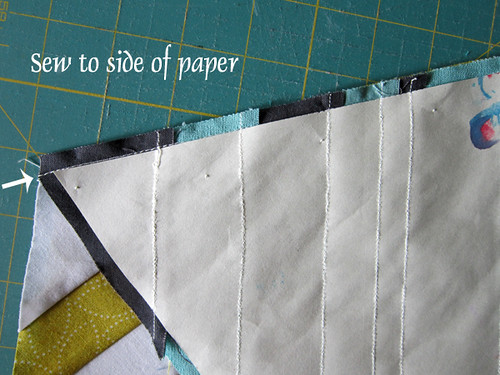
Press block component seams open, Then add next component(s) in the same way until the block is assembled.
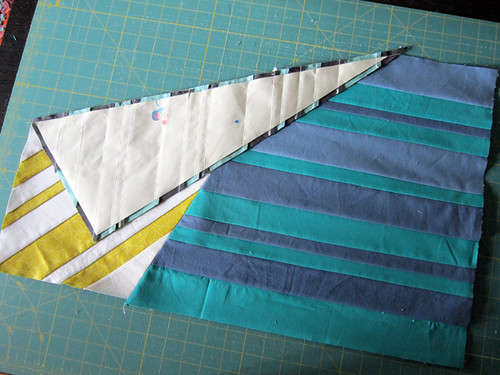
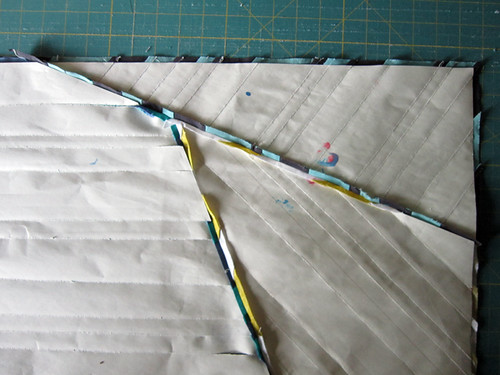
Lastly, trim to proper unfinished dimensions. Unfinished dimensions will be a 1/2" larger on both sides for rectangles and squares. For our 15" x 24" block, trim assembled block to 15.5" x 24.5".
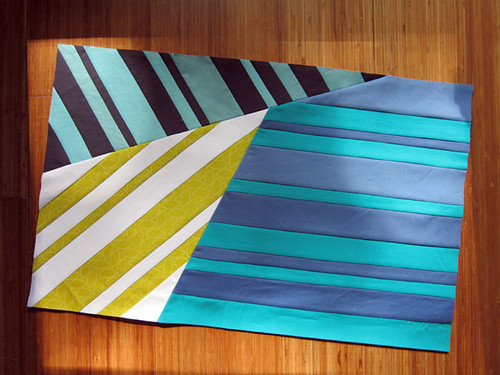
It's best to leave papers in place until you're ready to join blocks. The papers will add a little bit of stabilization to guard against stretching. Handle the raw edges of the block as little as possible until blocks can be joined. After blocks are joined, simply rip off paper from wrong side!
I'm going to be making a few more go Anywhere Stripe blocks for our bee quilt this month. I can't wait to see how the whole thing turns out!!!

